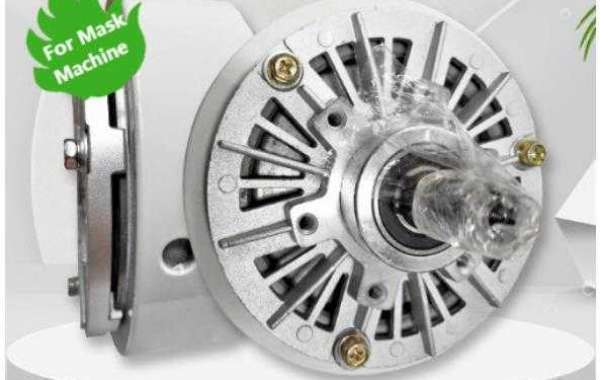
The magnetic powder brake is based on the electromagnetic principle utilizing the magnetic powder transferring torque. It has the characteristics of the substantial linear relationship between the exciting current and the transfer torque. Independent of slip, a certain torque can be transmitted, which has the advantages of fast response speed, simple structure, no pollution, low noise, no impact vibration, energy saving.
Working Principle Of The Magnetic Powder Brake
1. The magnetic powder brake adopting a magnetic powder as a medium, a magnetic particle chain is formed to transmit torque with power on, which is mainly composed of inner rotor, outer rotor, magnetic coil and magnetic powder.
2. When the coil is not powered, the active rotor rotates, due to the action of centrifugation, the magnetic powder is smashed on the inner wall of the active rotor and there is no contact between the magnetic powder and the driven rotor, the active rotor idling.
3. After the DC power is powered on, the electromagnetic field is generated and the magnetic particle chain is formed by the magnetic particle of the working medium under the action of magnetic lines. The inner rotor and the outer rotor are connected, thus achieving the purpose of transmitting, braking torque.
Advantages
1. High-precision and wide torque control, high accuracy control , the transmitted torque in the correct proportion to the exciting current form a high precision control.
2. Excellent durability, long service life, heat resistance, abrasion resistance, oxidation resistance, corrosion resistance.
3. High stability with fixed torque characteristics and the binding force between powder particles is stable. The sliding torque is very stable and there is no relationship with the relative rpm to maintain a constant torque.
4. Continuous sliding operation, excellent heat dissipation and the cooling structure with uniform thermal deformation is adopted, with the high heat resistance of the magnetic powder, allowing the connection, the braking power and the large sliding power, with the smooth sliding power, no vibration caused.
5. The impact is extremely small when the knot is smooth, and the impact can be start-up or stopped without impact.
6. Suitable for high frequency operation,fast response speed and special heat dissipation structure.
7. Lightweight, maintenance-free, adopting high temperature-resistant coils and special grease bearings. Special wear-resistant treatment is applied to the armature prone to wear.
8.Overload protection. Automatic slip in case of torque overload. Protect in overload situation and extend service life.
9.Anti-rust protective film. Carefully wrapped with plastic transparent film to prevent oil stains from penetrating'and scattering. Safe and secure.
Applications
1. Buffer start, stop with the smooth characteristics and the constant torque
2. Continuous sliding, tension control
3. Torque Limiter
4. High-speed response requirement
5. Power absorption
6. Positioning stop
7. Simulated load
Installation And Use
1. Magnetic powder brake adopts DC as excitation power supply.
2. A magnetic particle brake drive shaft should be installed horizontally.
3. The mounting of the drive shaft and the axis of the shaft is + 0.03 mm.
4. Magnetic powder brakes do not support the installation method of the radial bearing main power transmission.
5. For the first use of the magnetic powder brake, power off after 10 seconds of operation then power on, repeating several times. ensuring the fluidity and uniform distribution of magnetic particles.
6. The magnetic powder brake cannot be used exceeding normal torque and rotation speed, otherwise the life of the magnetic powder will decrease sharply.
Magnetic powder brake is a multi-purpose automatic control element with superior performance. It has been widely used in papermaking, printing, plastic, rubber, textile, printing and dyeing, wire and cable, metallurgy, and other unwinding and winding tension control in the coiled processing industry.














